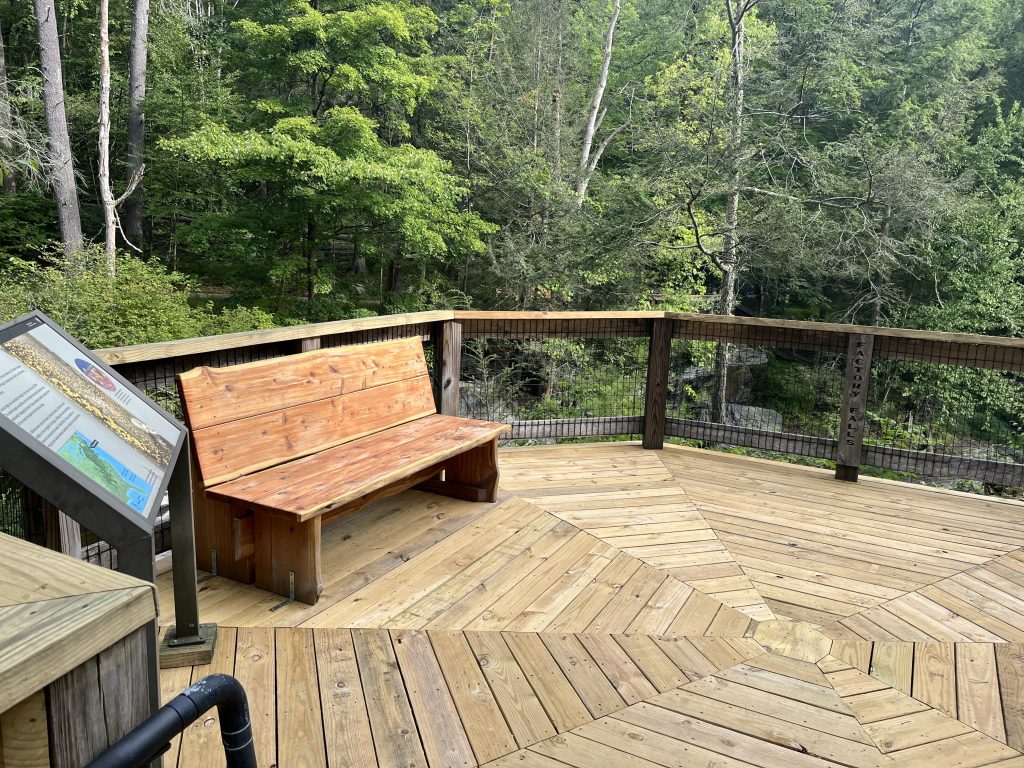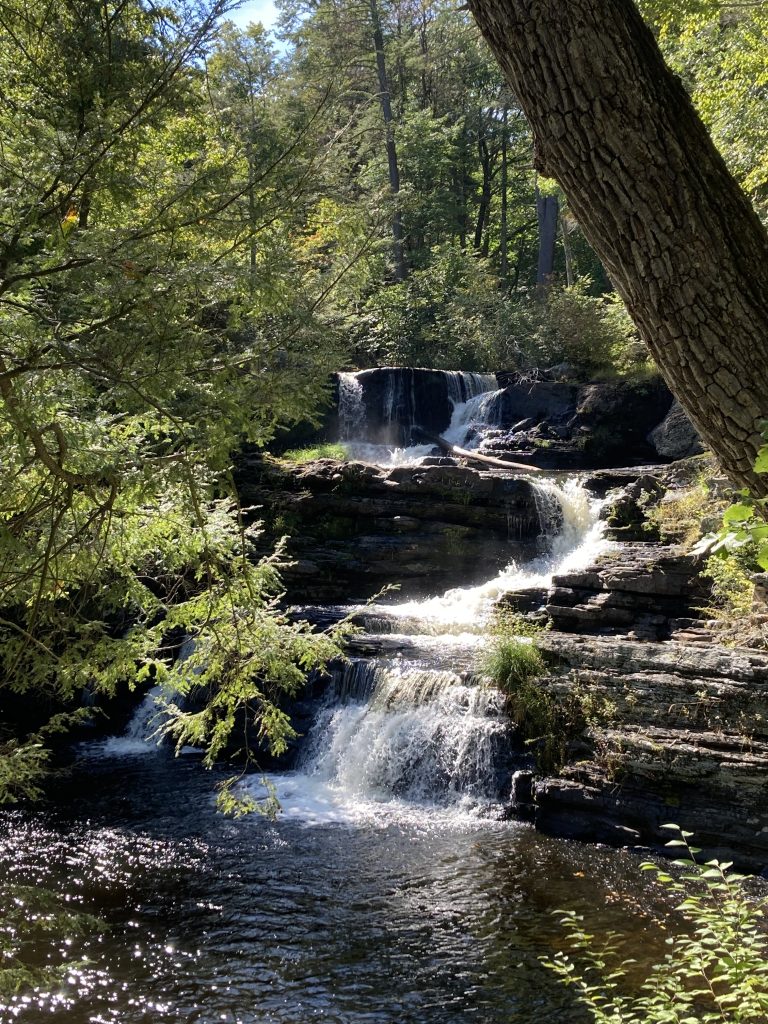
Childs Park to re-open today after six years for storm-related repairs
| October 2, 2024
Closed for six years to allow for nearly $3 million in storm-related repairs, George W. Childs Park in the Delaware Water Gap National Recreation Area is set to re-open today, once again making accessible its popular waterfalls, hiking trail and several observation areas.
The park was ravaged by back-to-back winter storms in 2018 that brought powerful winds, heavy snow and ice that toppled thousands of trees, which, in turn, caused entire hillsides to come undone.
Fallen trees crushed trail bridges, choked Dingmans Creek and the waterfalls and heavily damaged Civilian Conservation Corps-era historic buildings and other structures, including stairs, railings and observation platforms.
The storms’ aftermath left jagged-edged remains of trees dotting the landscape and upturned roots extended horizontally, like outstretched tentacles. Many of the toppled trees were mature with full canopies. Among them were 200-year-old hemlocks.

“Though there have been a few changes to the site, like the improved and expanded accessible portion of the trail and the removal and restoration of a short section of trail that was too damaged to repair, returning visitors and first-time visitors alike will be greeted by a rustic trail system with perfectly situated bridges and viewing platforms that highlight three scenic waterfalls and the natural environment in which they are located, similar to what was originally envisioned by George W. Childs over a century ago,” park Superintendent Doyle Sapp said.
The extensive damage meant the repairs stretched out as staff conducted assessments, secured funding for each phase of work, lined up contractors, developed construction and engineering plans and conducted necessary studies.
Read more: Childs Park reopening eyed for 2024 after yearslong closure for repairs
On-site work was completed in several phases by contractors and the park’s professional trail crew with some early assistance with site clearing from the park’s volunteer Trail Stewards.
Selection and removal of downed trees from the site was a complex process that involved teams of highly trained sawyers and arborists. Downed trees that do not present a hazard to the public or to infrastructure remain on site where they provide habitat, cover and contribute to the natural processes of the hemlock ravine ecosystem.
More than 2,000 feet of accessible trail has been regraded and resurfaced, including the addition of a new 950-foot section that leads to the historic well pump structure.
Four damaged trail bridges over Dingmans Creek were repaired and two bog bridges over wet areas along the trail were removed and replaced.
A short section of trail that sustained significant damage on the south side of Dingmans Creek between Fulmer and Deer Leap Falls was removed and the area was restored to natural conditions. Railings, posts, and fencing were replaced as needed throughout the site.
Substantial repairs were made to three observation platforms. Stairs, stairways, stair treads, and landings were repaired or replaced as needed throughout the site including construction of more than 60 box crib steps and treads.
The park was the brainchild of a wealthy Philadelphia philanthropist and publisher, George W. Childs who, along with friend George Donaldson, developed rustic trails and dedicated it to the public in 1892 as a place for people to enjoy nature.
Childs died in 1894 and his widow donated the site to Pennsylvania in 1912. It was operated as a state park until 1983, when it was donated to the Park Service. Once upon a time, the park allowed overnight camping, but that practice was discontinued in the 1930s.








